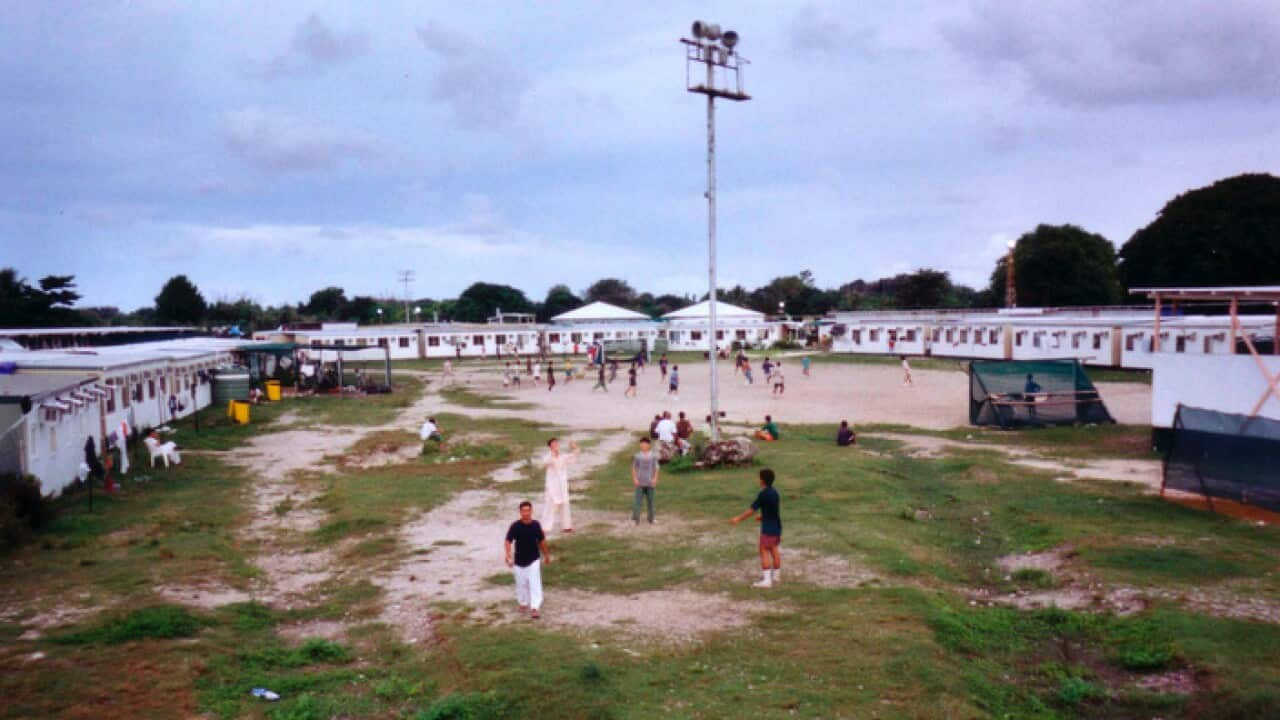Nauru’s status as processing centre of unauthorised marine arrivals, or tropical hell-hole for refugees (depending on the narrative you choose to adopt), is well established. Less well known is the place of Nauru in a parallel series of histories: as global geopolitical plaything, catalyst for economic and social transformation, agent of massive environmental change and victim of environmental greed.
The explanation for all this is not hard to find, for Nauru once possessed the world’s purest deposits of rock phosphate, the precursor of the agricultural fertiliser, superphosphate. This resource was almost entirely depleted during the 20th century, mainly to support the economic growth of its big neighbours, Australia and New Zealand. Without access to the soil nutrients of Nauru, neither country would have been able to establish the industrial agricultural systems that were fundamental to their economic, social and demographic development.
Their histories would have followed unpredictably different paths, their development would have been impeded and it is possible that neither of these nations would have attained first world status. There is also a strong case that, without the apparently limitless supply of nutrients to Australian and New Zealand soils, the great transformation of the southern lands to outposts of temperate Northern Hemisphere flora could never have taken place.
The geopolitical importance of this tiny island may be gauged from the lengths to which Australia was prepared to go to safeguard its access to Nauru’s resources. This began in 1914 when Australia seized the opportunity offered by the First World War to invade the then German Protectorate, deport the German population and secure control of the island. With the end of the war and at risk of losing the spoils of victory to the idealistic philosophies that gave rise to the League of Nations, Prime Minister Billy Hughes flatly refused to sign the Treaty of Versailles until Australia was guaranteed access to the island and its resources.
A similar set of events played out at the end of the Second World War. Nauru was one of countless islands across Oceania captured and garrisoned by the Japanese. By-passed and cut off by the US advance across the Pacific, the island was once again secured for Australian interests by Canberra’s prompt dispatch of HMAS Diamantina to accept the Japanese surrender.
By the time that Nauru managed to obtain independence in 1968, 30 per cent of its land area had been stripped of phosphate. Unfortunately, the new republic was unable to relinquish its taste for the wealth that phosphate had brought. The rate of mining, if anything, accelerated and by the late 1990s, 61 per cent of the island was denuded.
The profits that should have accrued to the nation were squandered, and money that could have maintained the tiny population at a first world standard of living was lost. The result is that Nauru faces the future with insufficient water to maintain its population, its primary phosphate exhausted, and its forests and soils largely destroyed by mining.
A lifeline was thrown to the nation in the first decade of the 21st century with the development of procedures for mining ‘secondary phosphate’, the material remaining from earlier, less efficient excavation methods. Exports of phosphate resumed and it has been estimated that the nation has sufficient secondary resources to maintain itself for up to 40 years. The problem is that these new and efficient mining techniques involve destroying the remarkable landscape of karst pinnacles exhumed by a century of hand and mechanical extraction. Once secondary extraction is completed, all that remains is a vast bulldozed wasteland of rubble and broken rocks.
But the spectacular exhumed karrenfield is one of the few resources that the nation possesses. Individual pinnacles reach over 14 metres and the exposed spitzkarren covers in excess of 10 square kilometres. The karrenfields of Nauru reveal the landscape of the island as it must have appeared a quarter of a million years ago, after the reefs had emerged from below sea-level and long before people arrived in the Pacific. Such landscapes in China, the Philippines and elsewhere in the tropics are venerated as scenic wonders and revered as scientific marvels. They are protected by World Heritage status and receive millions of visitors a year. This is a landscape that should be preserved, not bulldozed, and take its place on the list of global travel destinations.
The nation is at a crossroads. Secondary mining has won it a breathing space in which it can decide its future, but the side-effects of mining will destroy a resource that may help refocus the economy and drive it into the next century. The karst alone may not be enough to attract tourists in sufficient numbers to kick-start the economy, but in combination with other under-exploited attractions, including sport fishing, diving, the tangible artefacts of a remarkable history and perhaps a casino, it may be enough to place the nation on a sustainable and viable pathway.
Dr Stephen Gale is a research student within the Department of Archaeology at the University of Sydney. He was previously Professor and Head of Geography, Earth Science and Environment at The University of the South Pacific, during which he visited and worked in Pacific nations, including Nauru.












